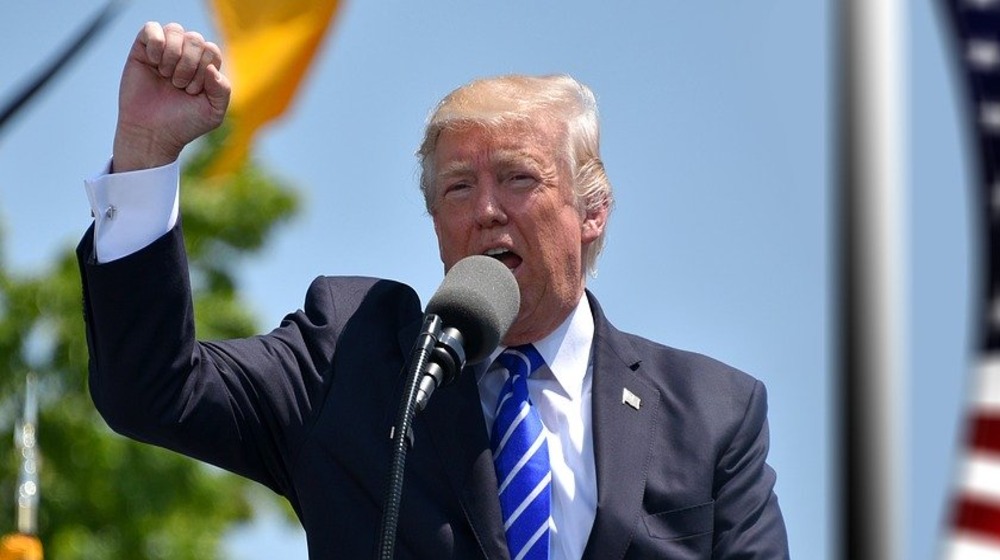Business
Trump’s Four Executive Orders for Coronavirus

President Trump signed last Saturday four executive orders on coronavirus relief for Americans. With Congress unable to agree on a stimulus bill, he took it upon himself to do it. “Democrats are obstructing all of it,” Trump explained. “Therefore, I'm taking executive action … and we're going to save American jobs and provide relief to the American workers.”
Negotiations for the new stimulus program began earlier in July but have stalled. Republicans have stood firm on a $1 trillion budget while Democrats wanted $3 trillion. The parties were also at odds over the reinstatement of the $600 unemployment bonus. Democrats want it retained as is, while Republicans want a smaller amount.
RELATED: President Trump’s Executive Orders A ‘Real Game-Changer’ For The Country
Minority Leader Kevin McCarthy (R-CA) blamed Speaker Nancy Pelosi (D-CA) for the delay. “Every time we've done legislation when it comes to COVID, Nancy Pelosi has always held it up for her own personal wish list,” he said. “Now when we are sitting here coming forward with people unemployed again, she held it up.”Senator Chuck Grassley (R-Iowa) defended the President's action. He tweeted: “I applaud [Trump's] executive actions to help the American [people].” Grassley, the top Republican on the Senate Finance Committee, tweeted. “Democrats all or nothing strategy jeopardizes the certainty Americans need to pay their bills. [President] Trump puts the American [people] first, compared to nonstop political games by Democrats.”
Trump’s Four Executive Orders for Coronavirus Relief Explained
The executive orders cover relief on unemployment, evictions, payroll tax, and college loans. Here's a detailed explanation of each executive order. For starters, it's actually one executive and three memoranda.
1: Memorandum: Unemployment Benefits
The first memorandum provides an “an additional or extra $400 a week and expanded benefits.” This replaces the $600 dollar unemployment insurance included in the previous CARES Act. 75% or $300 will come from the national government, while 25% is shouldered by the state. Last Sunday, Trump said he was open for the federal government paying 100% if governors requested so.
2. Executive Order: Moratorium on Evictions
The actual executive order calls on the HHS Secretary and the CDC Director to halt evictions if they will “prevent the further spread of Covid-19.” The order also discusses the possibility of providing aid to homeowners and renters. It calls on the secretaries of Treasury and the HUD to check any federal funds that can help. The EO does not identify or earmark any specific fund for this.
3. Memorandum: Payroll Tax Relief
To clarify, this does not waive the payroll tax but rather defers it until December 31. The payroll tax-deferred only covers those intended for Social Security (6.2%) and Medicare (1.45%). This applies to workers who earn $104,000 or less per year. Trump also hinted that if re-elected, he might seek to have this deferment wiped out and even end the payroll tax.
4. Memorandum: Student Loan Deferment
Student loan payments and interests are already suspended by CARES until September 30. The new memo extends the provision until December 31.
What Happens To The Stimulus Check?
While Trump addressed the issues above, there was no work on other similar concerns. The other major feature of the new stimulus bill, the one-time $1,200 relief check, was not addressed.
Other coronavirus-related problems that needed funding were also in need of answers. This includes funding aid for schools to deal with coronavirus adjustments. States have asked for federal relief to help with their budgets. Governors reported they are now collecting less revenue but are giving more handouts.
Where will the money come from?
The US Constitution requires Congressional approval for any government spending. It's unclear at this point how the White House can pay for the unemployment payments and other relief. Trump believes they have access to money they can divert to other means. This includes billions from previous coronavirus funds and the Disaster Relief Fund. Before, he shifted funding from the Pentagon to pay for a border wall under a “national emergency.” He believes he can do it again.
Trump is aware anybody can challenge his orders as Congress controls the budget. He dared detractors to do something that would deprive Americans of aid. He said: “If we get sued, it's [from] somebody that doesn't want people to get money. And that's not going to be a very popular thing.”
Complex or not, the President is aware something needs to be done. And with Congress made inutile by infighting, it was time for Trump to have things done his way. At the least, the move hopefully spurs Congress to come to terms and do something, anything.
Watch this video as President Donald Trump signs four Executive Orders on Coronavirus Relief:
Where are you on this? Do you believe Congress failed in their jobs, so the President had to step in? And did he deliver the goods? Let us know by sharing your comments below.















